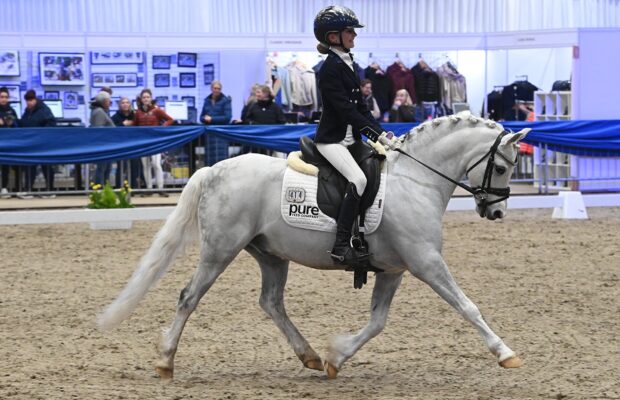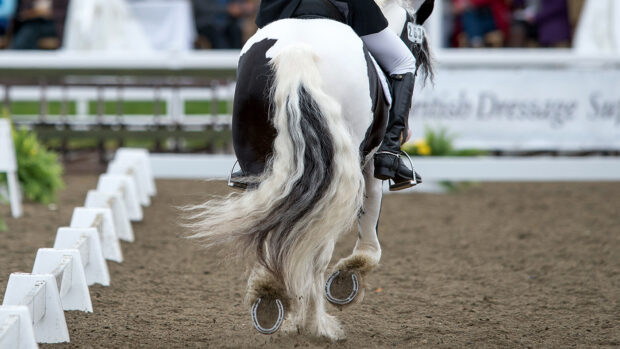The grand prix dressage rider discusses using turn on the forehand to improve suppleness and refine the horse’s understanding of the leg aid
*NB: the latest recommendation from the British Equestrian Federation is that “people don’t ride their horses unless strictly necessary”, but we hope this article will be prove useful to readers when the current coronavirus restrictions are lifted*
Aim
I use turn on the forehand with horses of all levels. For youngsters, it’s a good way to put them on the aids and teach them the difference between a yielding aid with a squeezing leg, as opposed to the forward aid which is a “clap” with the leg.
It’s also good for helping to close the horse up in his base, and get his hind feet nearer to his front feet.
It changes the frame and the balance of the horse in a really positive and easy way, and is a great movement for making a transition out of, such as a transition up into canter.
With an older horse — or one that feels blocked in the middle which prevents the hindleg coming forward under the body — using turn on the forehand helps to make the horse supple and able to use the hindleg more effectively.
The exercise
1. To start with, aim for a collected walk in a clear rhythm and get the horse as straight as possible in his body. Turn up the centre line, then leg-yield to the three-quarter line. Base turns on the forehand on a full circle.
2. With a young horse, you can start by leg-yielding from the centre line to the three-quarter line, then do your quarter (90°) turn on the forehand. It’s the same aid, so close the outside rein and encourage the inside leg to step under and forward over the outside hind. Place your weight down your inside leg and think about turning your shoulders in the direction of the flexion.
3. Once the horse is comfortable doing a quarter turn on the forehand, to avoid him learning to anticipate, change the size to a half (180°) or full turn on the forehand, so that each time you ask for the movement, it is a different size.
4. Once you feel comfortable walking in and out of turn on the forehand, you can then think about taking the connection you’ve created between your inside leg and outside rein forward into an upwards transition. I feel it’s really useful for a walk to canter transition. You want a bend in the horse’s ribs, but only a slight flexion in the neck.
Article continues below…
You might also be interested in:

#SundaySchool: How do I maintain impulsion in downward transitions?
Dressage rider Alice Oppenheimer explains how to keep a horse energetic and forward, even when slowing down

#SundaySchool: How do I develop my horse’s throughness?
Dressage rider Anand Patel offers advice on encouraging the horse to work from the quarters into an elastic contact

Subscribe to Horse & Hound magazine today – and enjoy unlimited website access all year round
Tips and pitfalls
- Don’t take your inside leg too far back. You are not trying to push the quarters over, you’re trying to create that bend and lifting feel in the middle of the horse.
- Try to ride with as little inside rein as possible — it’s about checking how good the horse is between inside leg and outside rein, and defining to the young horse what your inside leg is asking.
- Don’t push the horse too strongly or you’ll end up losing the outside shoulder.
- Horses tend to have better flexion on one side, so this exercise works on that suppleness in the ribs. If a horse is unblocked through the ribs, you can develop the amount of engagement on that side.
Would you like to read Horse & Hound’s independent journalism without any adverts? Join Horse & Hound Plus today and you can read all articles on HorseandHound.co.uk completely ad-free.




